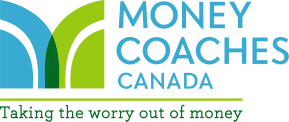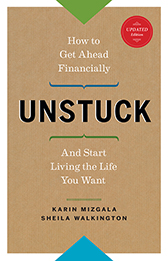By Leslie Gardner, FPSC Level 1® Certificant in Financial Planning

If the thought of tax season makes you squirm, you’re not alone. But being prepared, filing on time and knowing what you can deduct will help you get the job done with more left over in your pocket.
This year’s income tax filing deadline is still April 30th, but because it falls on a Saturday Canada Revenue Agency (CRA) will consider you have filed on time up until midnight May 2nd. If you’re self-employed you have until June 15th to file, but any amounts owing are due by May 2nd.
While a couple of months would seem like plenty of time, the natural tendency to put off unpleasant tasks can leave you in a last minute scramble to find receipts for children’s activities, medical expenses or other deductible expenses. A lot of tax time stress comes from a time crunch that is avoidable.
If you break the process down into manageable chunks, when it comes time to deliver your documents to your accountant or sit down to file from your computer, you will feel calmer and more organized.
Here are 5 tax filing tips to save you time and money:
1. If you haven’t done so in the past, register for My Account at the CRA website and sign up for direct deposit to get your refund back as soon as possible.
2. Find and organize your receipts. (This is also a good time to set up a system to organize your 2016 receipts to make next year a breeze). You need to find documentation for any expenses you intend to claim. Receipts to track down: medical, childcare, transit  passes, education and tuition, children’s arts and sports activities, charitable and political donations. And, don’t forget your RSP contribution receipts – still one of the best tax deductions Canadians have.
passes, education and tuition, children’s arts and sports activities, charitable and political donations. And, don’t forget your RSP contribution receipts – still one of the best tax deductions Canadians have.
If you are missing receipts contact the issuer as soon as possible so there is time to get a replacement before the filing deadline (another reason to start gathering receipts sooner rather than later).
3. Make a list of all your sources of income including your investments. If you haven’t already, you should receive your T4 slips, and investment transaction slips (T3 and T5) any day now. Some financial institutions don’t mail out slips anymore, so be sure to check online as well. Taxable income sources also include money you cashed out of an RRSP, rent received on an income property, income from a hobby business, money from the sale of property etc.
4. Get your tax knowledge up to speed. Tax rules and deductions can change year to year. Spend some time on the internet but be sure to visit reputable websites and check the date on the information. You can start with our blog post 10 ways to minimize your tax bill. You can also visit the CRA website to see what’s new.
Here are three things you may not know:
- If you’ve bought or sold investments or real estate, other than your principal residence, you may need to report a capital gain or loss on your tax return. Capital losses are deductible against any capital gains you earned this year or in the 3 preceding years. You can carry forward losses indefinitely.
- If you have stocks and you lost money in 2015, those capital losses are deductible.
- If you are caring for an elderly parent or a family member with a physical or mental disability you may qualify for the family care giver amount.
5. Give yourself time to file. If you are doing your own return, don’t try to do it piecemeal around your busy schedule. Give yourself uninterrupted time and have everything you need at hand. It will take the same amount of time whether you do it in March or the day before it’s due, but by doing it early you eliminate the deadline pressure that can cause you to make mistakes or have you pulling out your hair if you have an issue when filing. (Missing the deadline doesn’t mean you don’t have to file – it just means it will probably cost you more in interest, penalties and aggravation later!)
6. This one’s a bonus tip. A robust red wine pairs nicely with a job well done. Put your feet up and enjoy!


